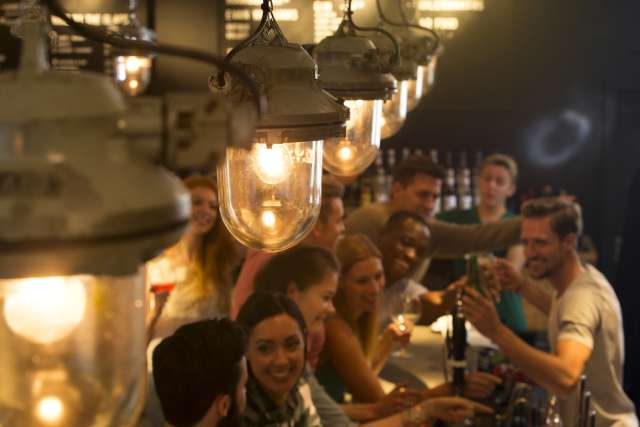Two people approach the bar. One appears intoxicated, perhaps a little disoriented. The other orders them a pair of double cocktails and two vodka shots.
In one scenario, the bartender serves the drinks and moves on to help other customers. In another, the bartender engages the intoxicated patron, asks if they came with other friends and summons the friend from across the room.
That brief act in the second scenario may have prevented a sexual assault.
Mandated training
In 2021, the city of West Hollywood passed an ordinance requiring bartenders and servers at businesses that serve alcohol to receive bystander intervention training to help prevent sexual violence. In 2022, more than 3,000 employees underwent the training, provided by the .
“You are in a position to notice when a dangerous situation might be developing,” said Rape Treatment Center counselor Marisa Faynsod, LCSW, during a recent training session. “And the role of the bystander can be really important.”
The aforementioned scenario with the bartender, which appeared in a video Faynsod shared during the training, demonstrated how one person’s simple gesture — asking the patron whom they came to the club with and getting a friend’s attention — could potentially change the course of the evening’s events.
“Sometimes there’s this notion that the bystander has to put on a cape and intervene,” Faynsod said. “But, really, what we know is that is not the case. Bystanders can play a really important role in preventing sexual assault. It often just takes one person to make eye contact with somebody.”
Intervention strategies
In the 45-minute training, Faynsod offered statistics regarding the likelihood of sexual assault among various demographics — lesbian and bisexual women are at the highest risk. She also presented strategies for bar and restaurant employees to consider in situations where a patron might be at risk.
Keep an eye out for people who may be vulnerable or incapacitated, she advised. Pay attention to posture, body language, facial expressions and tone of voice. If something feels or looks wrong, a bystander can make a difference.
It doesn’t have to be dramatic or difficult, she said. A simple question, “Are you OK?” can be incredibly powerful.
“That lets both the potential victim and the potential assailant know that you're paying attention,” Faynsod said. “Simply make eye contact with the potential assailant. We know assailants don't want to be caught. So, if they think that somebody's paying attention to them or watching them, they may change their plan of action.”
The West Hollywood initiative — requiring training for all managers, supervisors, bartenders and servers — means workers aren’t alone when it comes to bystander intervention practices.
“The hope is that this training helps you realize you are in a really special position to increase the safety of the West Hollywood community and the individuals who come to your establishments,” Faynsod said. “This isn’t about telling you what you need to do, but to start a conversation at your place of employment about noticing the warning signs.”
Faynsod said the Rape Treatment Center is open to presenting the training in other locations, outside of West Hollywood. In addition to community educational outreach, such as bystander intervention training, the UCLA Health Rape Treatment Center provides free, comprehensive care to victims of sexual assault.



